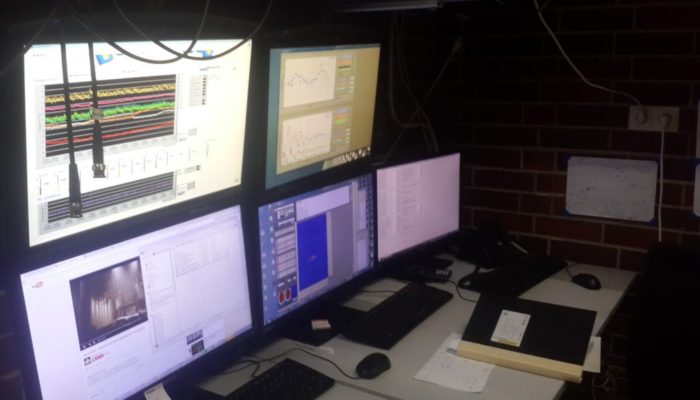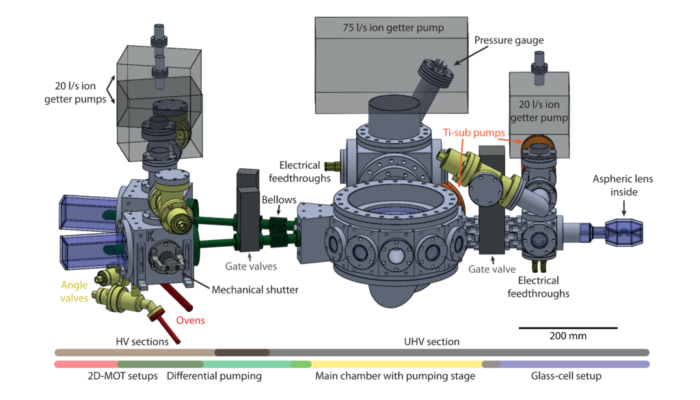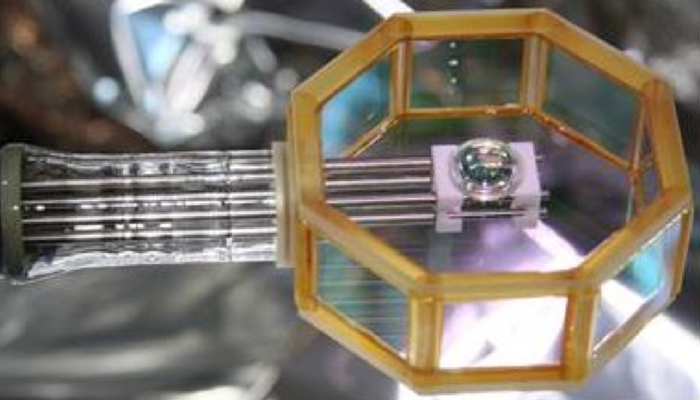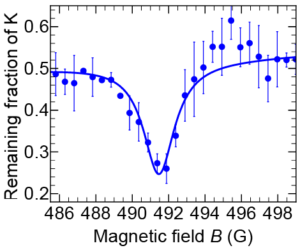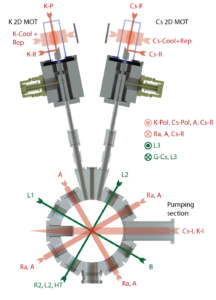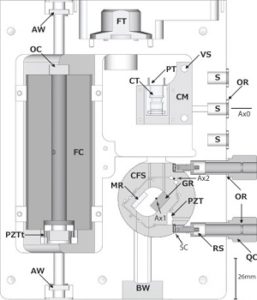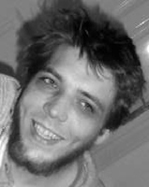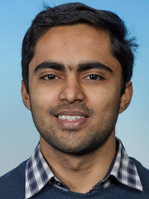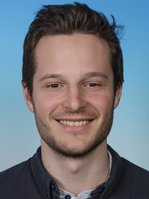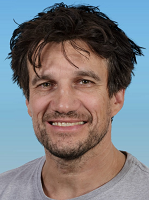KCs master layout
Fermionic quantum matter, quantum mixtures, and dipolar molecules under a microscope
The latest project in the research group of Prof. H.-C. Nägerl is aimed at studying quantum gas mixtures of cesium (Cs) and potassium (K). Mixed quantum gases offer a wealth of research opportunities, ranging from precision measurements to studies of various quantum many-body regimes. The research presently focuses on two main directions that both complement each other: Dipolar quantum matter and topological quantum matter. Within the first line of research, we aim to build a molecular quantum simulator based on ultracold polar KCs ground-state molecules. Our goal is to study novel types of dipolar quantum matter in optical lattice geometries under a high-resolution microscope that shall allow us to observe the molecules with single-site resolution. Within the second line of research, we aim at realizing exotic quantum many-body phases of fermionic and bosonic mixtures in lattice geometries with non-trivial band structures. Presently, we are focusing on ultracold bosons with tunable interactions loaded into two-dimensional Lieb lattices. Such a system is particularly interesting because it features two dispersive bands that form a Dirac cone and a flat band that intersects the Dirac point. A topological state of matter that is exclusively driven by interactions is expected to form.
Recent results: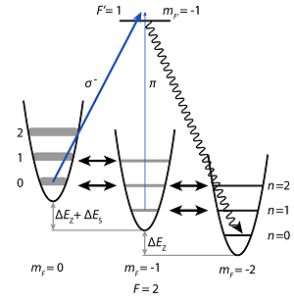
Degenerate Raman sideband cooling of 39K–
M. Gröbner, P. Weinmann, E. Kirilov, and H.-C. Nägerl
We report on a realization of sub-Doppler laser cooling of 39K atoms using degenerate three-dimensional Raman sideband cooling. We take advantage of the well-resolved excited hyperfine states on the D1 optical transition to produce spin-polarized samples with 1.4 x 108 atoms at temperatures of 1.8 μK. The phase-space densities are ≥10-4, which significantly improves the initial conditions for a subsequent evaporative cooling step. The presented cooling technique using the D1 line can be adapted to other atomic species and is applicable to high-resolution imaging schemes in far off-resonant optical lattices.
Observation of interspecies Feshbach resonances in an ultracold 39K-133Cs mixture and refinement of interaction potentials-
M. Gröbner, P. Weinmann, E. Kirilov, H.-C. Nägerl, P. S. Julienne, C. R. Le Sueur, and J. M. Hutson
We observe interspecies Feshbach resonances due to s-wave bound states in ultracold 39K-133Cs scattering for three different spin mixtures. The resonances are observed as joint atom loss and heating of the K sample. We perform least-squares fits to obtain improved K-Cs interaction potentials that reproduce the observed resonances, and carry out coupled-channel calculations to characterize the scattering and bound-state properties for 39K-Cs, 40K-Cs and 41K-Cs. Our results open up the possibilities of tuning interactions in K-Cs atomic mixtures and of producing ultracold KCs molecules.
A new quantum gas apparatus for ultracold mixtures of K and Cs and KCs ground-state molecules-
M. Gröbner, P. Weinmann, F. Meinert, K. Lauber, E. Kirilov, and H.-C. Nägerl
We present a new quantum gas apparatus for ultracold mixtures of K and Cs atoms and ultracold samples of KCs ground-state molecules. We demonstrate the apparatus’ capabilities by producing Bose-Einstein condensates (BEC) of 39K and 133Cs in a manner that will eventually allow sequential condensation within one experimental cycle, precise sample overlap, and magnetic association of atoms into KCs molecules. The condensates are created independently without relying on sympathetic cooling. Our approach is universal and applicable to other species combinations when the two species show dramatically different behavior in terms of loss mechanisms and post laser cooling temperatures, i.e. species combinations that make parallel generation of quantum degenerate samples challenging. We give an outlook over the next experiments involving e.g. sample mixing, molecule formation, and transport into a science chamber for high-resolution spatial imaging of novel quantum-many body phases based on K-Cs.
Compact, robust, and spectrally pure diode-laser system with a filtered output and a tunable copy for absolute referencing
–E. Kirilov, M. J. Mark, M. Segl, H.-C. Nägerl
We report on a design of a compact laser system composed of an extended cavity diode laser with high passive stability and a pre-filter Fabri-Perot cavity. The laser is frequency stabilized relative to the cavity using a serrodyne technique with a correction bandwidth of ≥6 MHz and a dynamic range of ≥700 MHz. The free running laser system has a power spectral density (PSD) ≥100 Hz2/Hz centered mainly in the acoustic frequency range. A highly tunable, 0.5–1.3 GHz copy of the spectrally pure output beam is provided, which can be used for further stabilization of the laser system to an ultra-stable reference. We demonstrate a simple one-channel lock to such a reference that brings down the PSD to the sub-Hz level. The tuning, frequency stabilization and sideband imprinting is achieved by a minimum number of key elements comprising a fibered EOM (electro-optic modulator), AOM (acousto-optic modulator) and a NLTL (non-linear transmission line). The system is easy to operate, scalable, and highly applicable to atomic/molecular experiments demanding high spectral purity, long-term stability, and robustness.
The Team
Former members:
- Philipp Weinmann, 2012-2017, PhD student
- Miroslaw Marszalek, 2013-2015, 2017, master thesis
- Peter Oles, 2015-2016, master thesis
- Emil Kirilov, 2012-2016, postdoc (now in the group of Prof. Rudolf Grimm)
- Benjamin Ziernhöld, 2014-2015, master thesis
- Maximilian Segl, 2014-2015, master thesis
